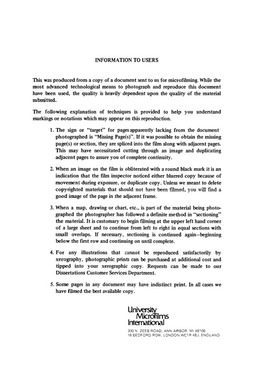| dc.contributor.author | Mayfield, Sandra J., | en_US |
| dc.date.accessioned | 2013-08-16T12:28:02Z | |
| dc.date.available | 2013-08-16T12:28:02Z | |
| dc.date.issued | 1980 | en_US |
| dc.identifier.uri | https://hdl.handle.net/11244/4726 | |
| dc.description.abstract | The art of meditation allows Browne the freedom to construct the enigmatic persona, the "I" which is immersed in subjective consideration of the mysteries of life and the "I" which contemplates these mysteries with objective disinterestedness. The art of meditation allows him to operate on the level of discursive reasoning and the level of symbol simultaneously. It allows him the privilege of creating memorable symbols, as he syncretizes his thoughts from time to time in his narratives, but it also provides a way for leaving the mysteries partially unresolved. | en_US |
| dc.description.abstract | Meditation affected Browne in two broad ways: it offered him as scientist an acceptable mode of adoring God through His creatures, and it provided him a method of dialectic. Urne Buriall and the Garden of Cyrus are the most refined products of Browne's imagination. In them, Browne as artist utilizes meaningful symbols (urn, quincunx) as the focal points of meditation. His commentaries are deflected from these symbols to affect the reader by reason and by emotion until the reader constructs his own method of reflection. Browne's main subject in all his works is the nature of Being--the nature of the created order, the nature of man, the nature of God. Meditation allows him as scientist and literary artist to penetrate the nature of all Being. | en_US |
| dc.description.abstract | Sir Thomas Browne is a transitional figure in the history of English prose. As a literary artist, he signifies the "divided and distinguished" worlds of the classical heritage and the modern era. Like Boccaccio and Dante, he believes that poetry and religion have a common divine origin; like Bacon and Descartes, he believes that the key to understanding all creativity lies in the study of the operations of the mind. | en_US |
| dc.description.abstract | Thus, Browne as a transitional figure affirms the divine source of creativity, and at the same time he emphasizes subjectivity and the operation of the mind in the act of contemplation. | en_US |
| dc.description.abstract | Browne's prose demonstrates the active working of a mind in search of truth. If his prose seems uneven and digressive, it is in reality the portrayal of what Morris Croll terms the "athletic movement" of the mind in its struggle toward certainty. Browne's prose illustrates a dialectic which moves from reason to emotion to faith. He offers no real solutions to the enigmas he poses, but rather offers the reader a mode of thinking which will allow the reader to participate in the active movement toward truth. | en_US |
| dc.description.abstract | The dialectic visible in Browne's prose was probably influenced by the art of meditation as it was practiced in the seventeenth century. Bishop Joseph Hall, friend of Browne and author of the "Art of Divine Meditation, " transcribed a "stair of meditation" passed down from the Middle Ages by Jesuit writers. This method of devotional exercises serves as a framework for a dialectic that begins with reason and ends in intuitive moments of insight. Browne's Religio Medici conforms in its basic structure to this stair of meditation. More important, the stair of meditation affords Browne the means of utilizing the subjective imagination. | en_US |
| dc.format.extent | 160 leaves ; | en_US |
| dc.subject | Literature, English. | en_US |
| dc.title | The influence of the art of mediation on Sir Thomas Browne's imagination. | en_US |
| dc.type | Thesis | en_US |
| dc.thesis.degree | Ph.D. | en_US |
| dc.thesis.degreeDiscipline | Department of English | en_US |
| dc.note | Source: Dissertation Abstracts International, Volume: 41-03, Section: A, page: 1065. | en_US |
| ou.identifier | (UMI)AAI8018929 | en_US |
| ou.group | College of Arts and Sciences::Department of English | |
